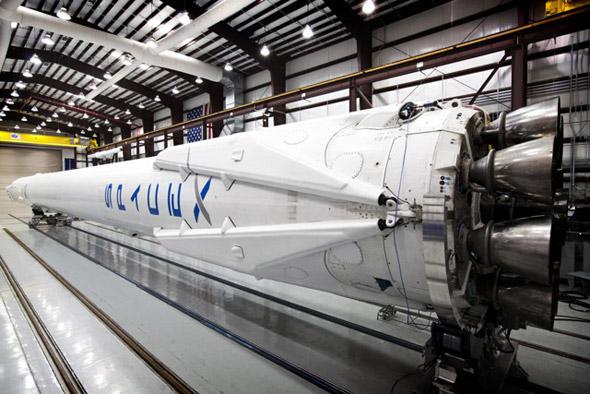Today (Monday, April 14, 2014), SpaceX is scheduled to launch a modified Falcon 9 rocket on a resupply mission to the International Space Station. The launch is scheduled for 20:58 UTC (4:58 p.m. EDT), and you can watch it live on NASA TV or Ustream (I prefer the latter; there’s less lag in the video stream).
This third mission for SpaceX to the ISS has some interesting stuff going on. I think the most exciting is the Optical Payload for Lasercomm Science, or OPALS. Spacecraft currently communicate with the ground via radio transmissions, the signal encoded with information much the way as how a radio in your car works. OPALS will use an optical light laser for this instead, which is a big leap forward if it works. Lasers take very little power, and the shorter wavelength of optical light means a lot more info can be encoded into the beam. This test will beam a video taken on ISS along with other information down to the ground.
When I was a kid, I read all of science-fiction author Larry Niven’s stuff, and his ships communicated using lasers (they played key roles in several stories, too). When I got older I realized how many advantages there were to using lasers instead of radio, and now it’s becoming a reality. Score another one for sci-fi.
Two other payloads include a suite of hi-def cameras that will take video of Earth (to test which designs work best in space) and a nifty package (called Veggie) that will allow the astronauts to grow vegetable plants in space using LED lights.
But there’s still another cool thing: SpaceX will be testing the hardware needed to have the first stage of the Falcon 9 rocket land itself for reuse. This is an idea they’ve been testing with their Grasshopper series of test flights, using landing legs stowed on the side of the booster. After the stage separation (and the second stage lofts the Dragon capsule up into space), the booster will execute a burn to slow down, and the legs will deploy during the burn. This will all happen over the Atlantic Ocean, so it’s not an actual full-up landing burn; it’ll be a splashdown! But it’ll test many of the needed systems for an eventual and literal landing. SpaceX says the odds of this being a completely successful test are low, but it’s worth giving it a shot.
Once the Dragon capsule is in orbit it’ll rendezvous with ISS and berth on April 16. If there is a delay in launch, the next possible launch date is April 18. Various hardware issues on the Dragon and ISS have delayed the original scheduled launch, but engineers have decided it’s a go for today.
SpaceFlightNow will have fairly up-to-date messages loading on its site for more information. I’ll be watching and live-tweeting as well, of course. Watching a rocket launch is always fun, so I hope you’ll join in.
